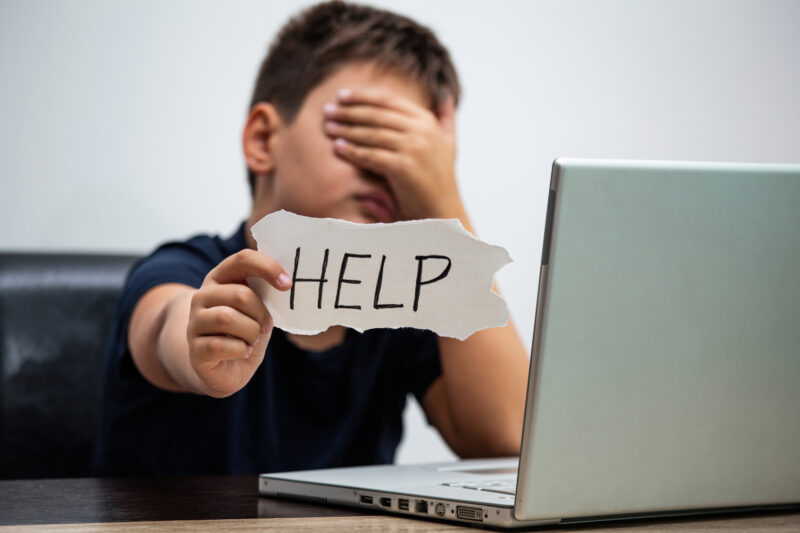In today’s digital age, the question of whether children, adolescents, and young adults are becoming desensitized to violence, hatred, and intolerance may be rhetorical. Exposure to violent and negative content on various media platforms can have a profound impact on how people (especially, possibly, children) perceive and react to real-world violence. Let’s discuss desensitization, its origins, its impact on empathy, and some strategies parents can incorporate to mitigate its effects.
What is Desensitization?
Desensitization refers to the reduced emotional and physical response to a situation, circumstance, or even an event after being exposed to it repeatedly. For example, when children are exposed to frequent violent content, especially violence committed by people against other people, on media sites or platforms (e.g., TV, video games, YouTube), they may become less sensitive to the pain and suffering of others. Research shows that this exposure can lead to lower emotional responses to real-life violence, less empathy, more aggression, and a greater acceptance of using violence to solve problems (Mrug et al., 2016).
Origins of Desensitization
Desensitization has its roots in psychology, particularly through the work of Albert Bandura. In the 1970s, Bandura’s social learning theory (SLT) demonstrated that children tend to imitate what they see, especially from influential sources like television (Su et al., 2010). Thus, according to Bandura’s SLT, repeated exposure to violent media can lead to desensitization. Many studies have since supported Bandura’s findings and support the theory that children who are regularly exposed to media violence tend to exhibit higher levels of aggression and are more likely to engage in criminal behavior as adults (Media violence, 2009).
Impact on Empathy
Desensitization to violence can significantly impact empathy—the ability to understand and share the feelings of others (Mrug et al., 2015). When children are repeatedly exposed to violent content, they may start to see violence as a normal part of life and become less responsive to the pain and suffering of others (Media violence, 2009). Studies have shown that regular exposure to violent media can lead to a decrease in empathetic responses (Su et al., 2010). This reduced sensitivity can impact social behavior and could increase the chances of aggressive and antisocial actions (Pittaro, 2019).
Strategies for Parents
Given the pervasive nature of violent media content, there are several positive steps parents can take to help protect their children from its potential effects. Here are some strategies to consider:
- Monitor Media Consumption: Keep track of children’s media content and set limits on screen time. This includes television, movies, video games, and social media. Explore the Thrive Professional Resource guide for more tips on managing screen time (page 17).
- Promote Media Literacy: Educate children about the impact of media violence. Media-literacy programs can equip children with skills, so they can distinguish between reality and fiction and understand the consequences of violent actions and behaviors. Explore the National Association for Media Literacy Education’s Parent’s Guide to Media Literacy and other resources here.
- Encourage Positive Media Choices: Encourage children to engage with non-violent media content. Provide access to educational programs, documentaries, and prosocial video games. Using these types of alternatives can help foster positive behavior and attitudes.
- Model Appropriate Behavior: Children often imitate their parents’ behavior. Parents can positively influence their children’s behavior by modeling empathy, kindness, and non-violent conflict resolution.
- Create Open Communication Channels: Establish an environment where children feel comfortable discussing what they see in the media. This enables parents to address any concerns and provide guidance on interpreting violent content.
- Use Parental Controls: Utilize parental control features on devices and streaming services to help restrict access to inappropriate content.
Many consider desensitization to violence a growing concern for future generations. While we cannot control the world’s violence, we can take actionable steps to manage what is viewed in our homes. As we strive to be mindful of the media our children consume and foster open discussions, we can support our children’s healthy emotional and psychological development and help nurture a generation of people who value kindness and understanding.
References
American Academy of Pediatrics. (2009). Media violence. Pediatrics, 124(5), 1495–1503. https://doi.org/10.1542/peds.2009-2146.
Mrug, S., Madan, A., & Windle, M. (2016). Emotional desensitization to violence contributes to adolescents’ violent behavior. Journal of Abnormal Child Psychology, 44(1), 75. https://doi.org/10.1007/s10802-015-9986-x.
Mrug, S., Madan, A., & Wright, R. A. (2015). Emotional and physiological desensitization to real-life and movie violence. Journal of Youth and Adolescence, 44(5), 1092. https://doi.org/10.1007/s10964-014-0202-z.
Pittaro, M. (2019, May). Exposure to media violence and emotional desensitization. Psychology Today. https://www.psychologytoday.com/us/blog/the-crime-and-justice-doctor/201905/exposure-media-violence-and-emotional-desensitization.
Su, W., Mrug, S., & Windle, M. (2010). Social cognitive and emotional mediators link violence exposure and parental nurturance to adolescent aggression. Journal of Clinical Child and Adolescent Psychology, 39(6). https://doi.org/10.1080/15374416.2010.517163.

